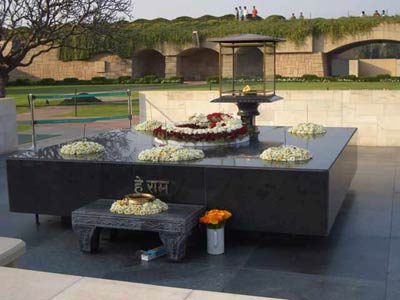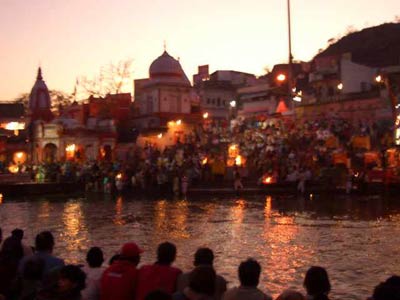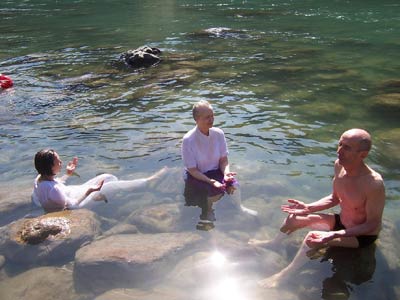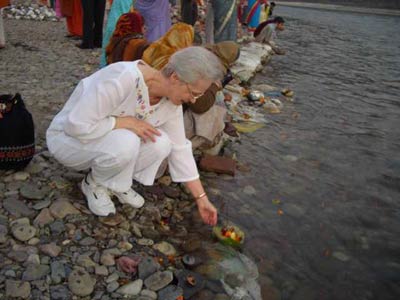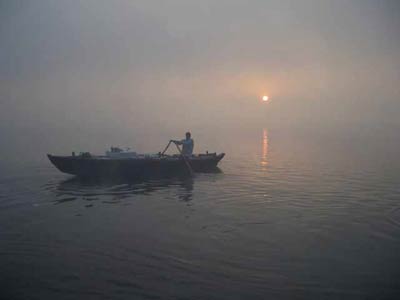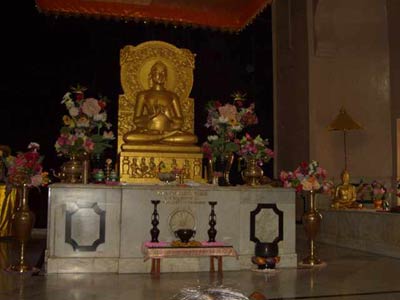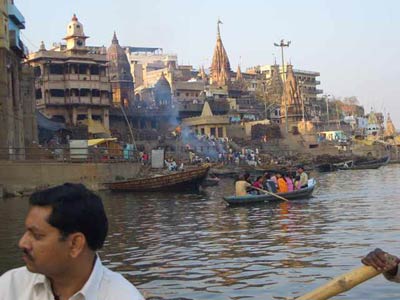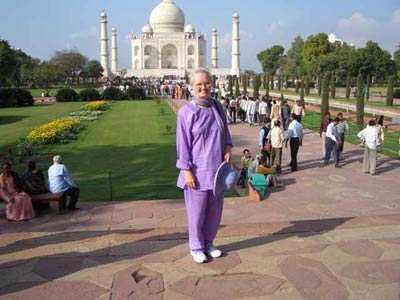Gleanings on the Web™
Welcome to Gleanings on the Web™! This publication is an on-line version of a bi-monthly subscription publication we had for almost ten years. When we closed the publication, we expected that to be the end of it. To our delight and our surprise, it metamorphosed into what you are seeing now. New editions will be forth-coming approximately every 2-3 months. Please feel free to e-mail this, and/or any archived material, to your friends. Click here to email this page to a friend. It is our joy to share these thoughts with you. We hope you will enjoy them.
NORTH INDIA 2007
I guess I shouldn't have been surprised at how different North India is from South India. When you stop and think about it, the regions in our country are different, too, aren't they? In India, life on the East Coast is altogether different from that on the West Coast, whether you're in the North or the South. The topography is different, the customs, the history, and the languages are different. How they manage to hold together as a nation without even a common language among them is a mystery to me, but they do. Our guide last year told us their cohesiveness is due to two things - the ancient history they all share, and their devotion to family and to God. We could all learn from that example, couldn't we?
One of the things that made our trip so different this year was that life in the North was so chaotic. Perhaps I should clarify that point - our experience of life in the North was chaotic. The combination of undescribable traffic in the cities, the density of life there, the noise and confusion that was everywhere were enough to totally disorient a person if you didn't have your wits about you. Trying to walk, especially in the holy city of Varanasi, was almost impossible. We knew if we ever got separated when we were walking, they would never find us. We were immensely grateful when we were able to use the ever-faithful rickshaws where we could ride up above the chaos and know that someone knew not only where we were but also where we were going.
A friend of mine, who was also in India, calls life over there "organized chaos at its finest." She says, "You absolutely have to go with the flow or you'll simply come apart at the seams." She is right. The trip was strenuous, and by the time it was over, we were all on sensory overload. However now, as I look back, all that which seemed so overwhelming at the time has finally faded into the background. What I remember is those very special moments that were worth everything we went through to make that experience possible.
One of those moments was being at Sarnath where Buddha preached his first sermon. I have to admit I'd never given much thought to Buddhism, having been raised in a Christian tradition, but being there was special. In fact, it was more than special. There was an energy there that reminded me a lot of when I was on the Appian Way years ago, walking exactly where the disciples had walked. The sense of presence there was unmistakable, and there was a presence at Sarnath, too.
It seemed only fitting that we began our tour by visiting Raj Ghat, which is the memorial at the site of Gandhi's cremation. Known and loved as "the Father of our Country," Gandhi captured the heart of his people and led them fearlessly yet nonviolently to independence from British rule and subjugation. The memories of Gandhi's example flooded my memory as I stood there and caused a prayer to rise within me that I, too, might be as dedicated to the path of my calling.
No matter where we went, it seemed there were wonders to behold. When we were in Haridwar, we rode a gondola much like a ski lift to visit a huge temple that was built long ago on top of a mountain. The view up there was spectacular. You could see over the entire valley, but what was just as amazing, to me at least, was the very fact that they were even able to build that temple on top of that steep mountain. How did they ever get it all up there? Every age has its mysteries, I guess, and that is certainly one of them.
I'll never forget the Ganges. We followed her up into the foothills, and she is exquisite. After we visited Vasishtha's cave, we walked over to the Ganges and bathed in it. I've never seen such water. Nor have I felt such water. It isn't just clear. It's alive, and it's magical. Now I understand what a living stream is, and the pictures we took there show it.
After we'd all had a chance to meditate sitting in that amazing water, we dried off and gathered around as Roger Gabriel (our tour leader) performed a beautiful initiation ceremony for Ian Kerr. Ian has been studying with Roger so he could become a meditation instructor. As we gathered together for the ceremony, a lovely Himalayan butterfly came over and fluttered around us during the entire ceremony. Ancient legend says the butterfly is a symbol for the Holy Spirit. That message was not lost on us, for we all felt blessed by its presence.
You probably already know the Ganges has its origin in the heart of the Himalayas. What you may not know, and neither did we, is that much of life in the North Indian culture centers around that sacred river. From conception, to birth, through all the special moments in life to the final crossing over at the moment of death, it is all consecrated on the shores of the Ganges. Not only that, every morning at sunrise and again every evening at sunset sacred ceremonies called Aarti's are performed there on the banks of the Ganges to consecrate and dedicate their daily life. The sun as the giver of life and the river as the sustainer of life are honored with chanting and music, candles and lanterns, and great devotion. We attended several of these as we moved from city to city, all different, but all stemming from the depths of an ancient tradition. Perhaps you really don't have to all speak the same language when your devotion unites you. That certainly was how it seemed.
There is so much more to say, but I think this is where I'll stop and let some of my pictures speak for me instead. While this wasn't an "easy" trip, it certainly was memorable, and I'll never forget it.
~Donna Miesbach~
Click here to email this page to a friend. Click here for Gleanings archives.
